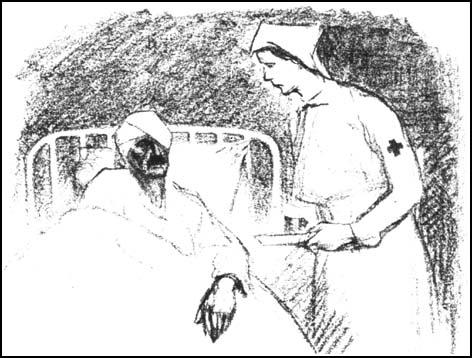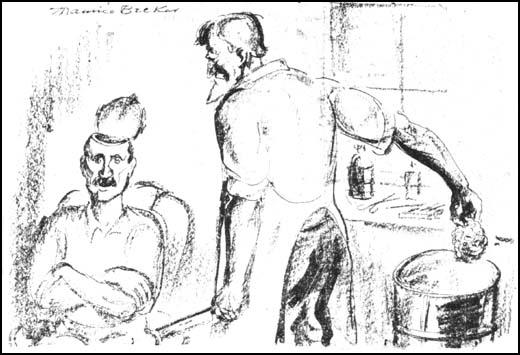Maurice Becker
Maurice Becker, the son of a soldier in the Russian Army, was born in Gorky in 1889. Three years later the Becker family emigrated to America and settled in the Jewish quarter of New York. After attending New York'sCommercial High School, Becker worked in a local garment factory. He developed an interest in art and in 1908 he began taking lessons from Robert Henri and eventually became a member of what became known as the Ash-Can Group.
In 1913 Becker joined with Robert Henri, John Sloan, George Bellows and Stuart Davis in taking part in the famous 1913 Armory Show. Becker also began drawing cartoons. He was a great admirer of radical artists such as Art Young, Rockwell Kent and Robert Minor who were using their art in an attempt to obtain social reforms.
In 1914, John Sloan, the editor of The Masses, began using Becker's work. Becker also had cartoons published in the New York Tribune and Metropolitan. Becker was a pacifist and a large number of his cartoons concerned the First World War. This included his powerful front-cover cartoon for The Masses in September, 1914, entitled Whom the Gods Would Destroy They First Make Mad.

Maurice Becker, The Masses (December, 1914)
Becker was also active in the pacifist organisation, American Union Against Militarism. Attitudes towards pacifists changed when the USA entered the war in 1917. Becker was conscripted into the USA Army and when he refused to fight, he was sentenced to 25 years hard labour in Fort Leavenworth Disciplinary Barracks.
In 1919, with the war over, President Woodrow Wilson decided to free all conscientious objectors from prison. After his release, Becker began contributing cartoons to the new radical journal in New York, the Liberator. He later moved to Mexico where he concentrated on painting but his cartoons continued to appear in left-wing journals such as the Daily Worker, New Solidarity and the New Masses.
Becker remained a pacifist and although a Jew, refused to produce pro-intervention cartoons during the early stages of the Second World War.

Primary Sources
(1) Maurice Becker, statement at Military Tribunal (18th October, 1918)
Rockwell Kent, a painter, saw some of my drawings and told me of a magazine which he thought could use them. The magazine was The Masses whose ideals were such that artists could express themselves in it unhampered by considerations which control commercial magazines. Ever since I could reason and think I have had a horror of war. I do not believe it is right to kill a human being under any circumstances. I do not belong to any religious sect of any church but my own conscience leads me to this position. Much of my artistic work and many of my sketches and cartoons done since the war began bear me out in this statement.
(2) In an interview with Richard Fitzgerald in 1968, Maurice Becker was critical of those radicals who abandoned socialism after the First World War.
Quite often we find that people who espouse a cause while it's on paper became critical when they face the reality or desert and became reactionary as do the Max Eastmans those who continued with New Masses were not Eastmanites.
(3) In an interview with Richard Fitzgerald in 1968, Maurice Becker explained why he did not advocate the USA becoming involved in the Second World War.
I have no sympathy for those who engineer wars and give them appealing names only to slaughter and make fortunes, and will never call such atrocities by the label 'Patriotism'.
